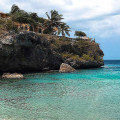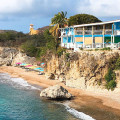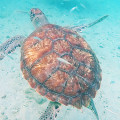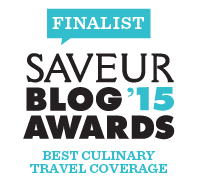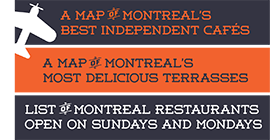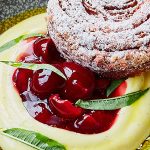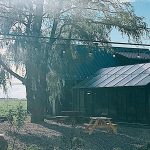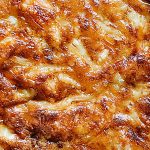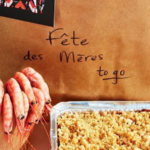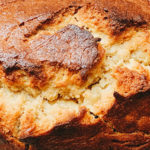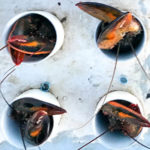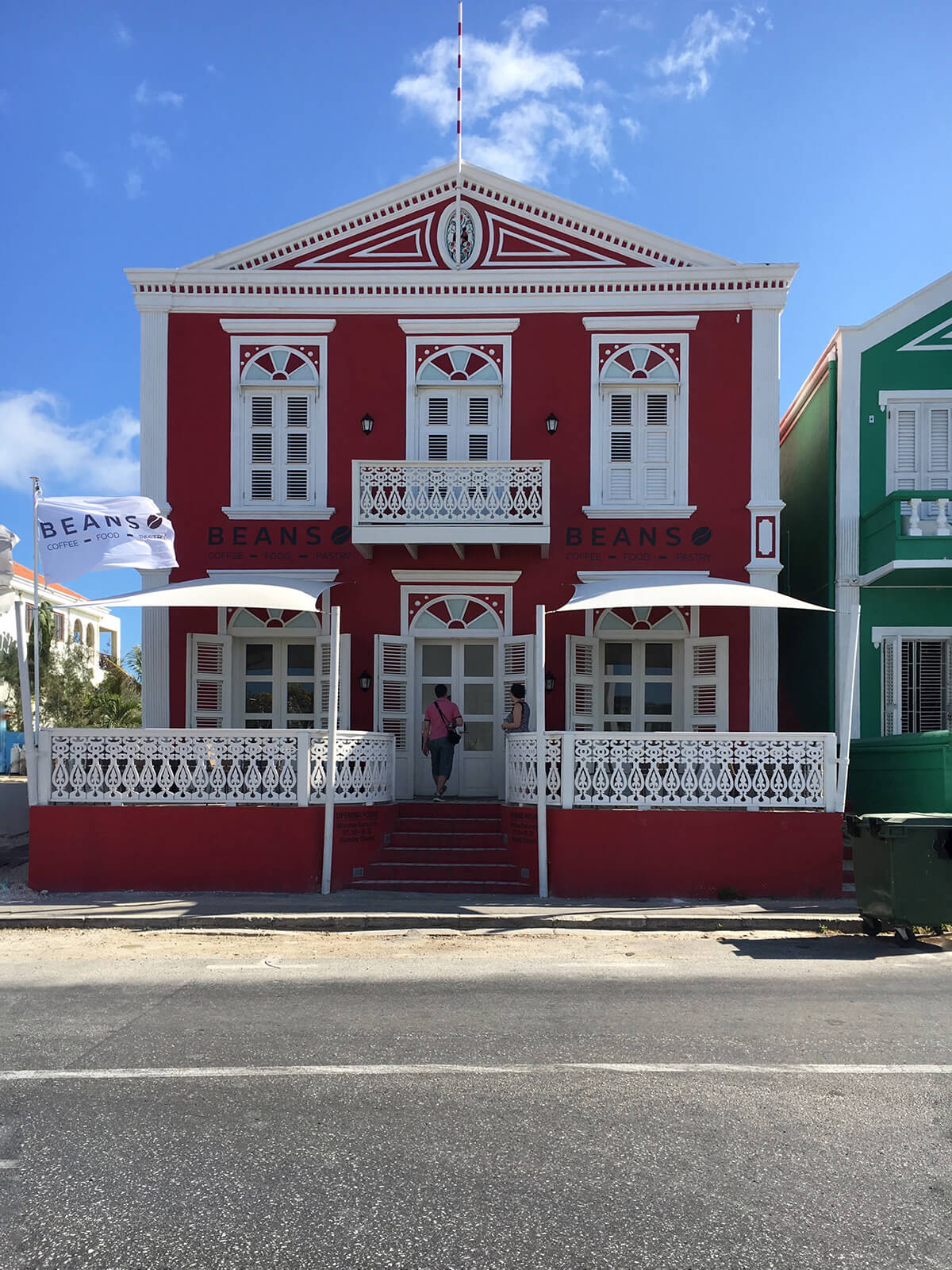
Willemstad’s lovely Dutch Caribbean architecture
Curaçao is a wonderful island located in the most southern part of the Caribbean, about 60km off the coast of Venezuela. It’s part of the ABC chain of islands (Aruba, Curaçao, Bonaire) that are constituent countries of the Kingdom of the Netherlands, which means that they’re an independent island nations with a few exceptions when it comes to government and laws. I spent 8 days on Curaçao and tried to visit as many places as possible while there. I fell in love with the small island because of its friendly people, incredibly blue water, unbelievable snorkelling and beautiful year-round weather, among other things. If you ever get the chance to visit, and I highly recommend that you do, below are a few things I recommend doing while on Curaçao.
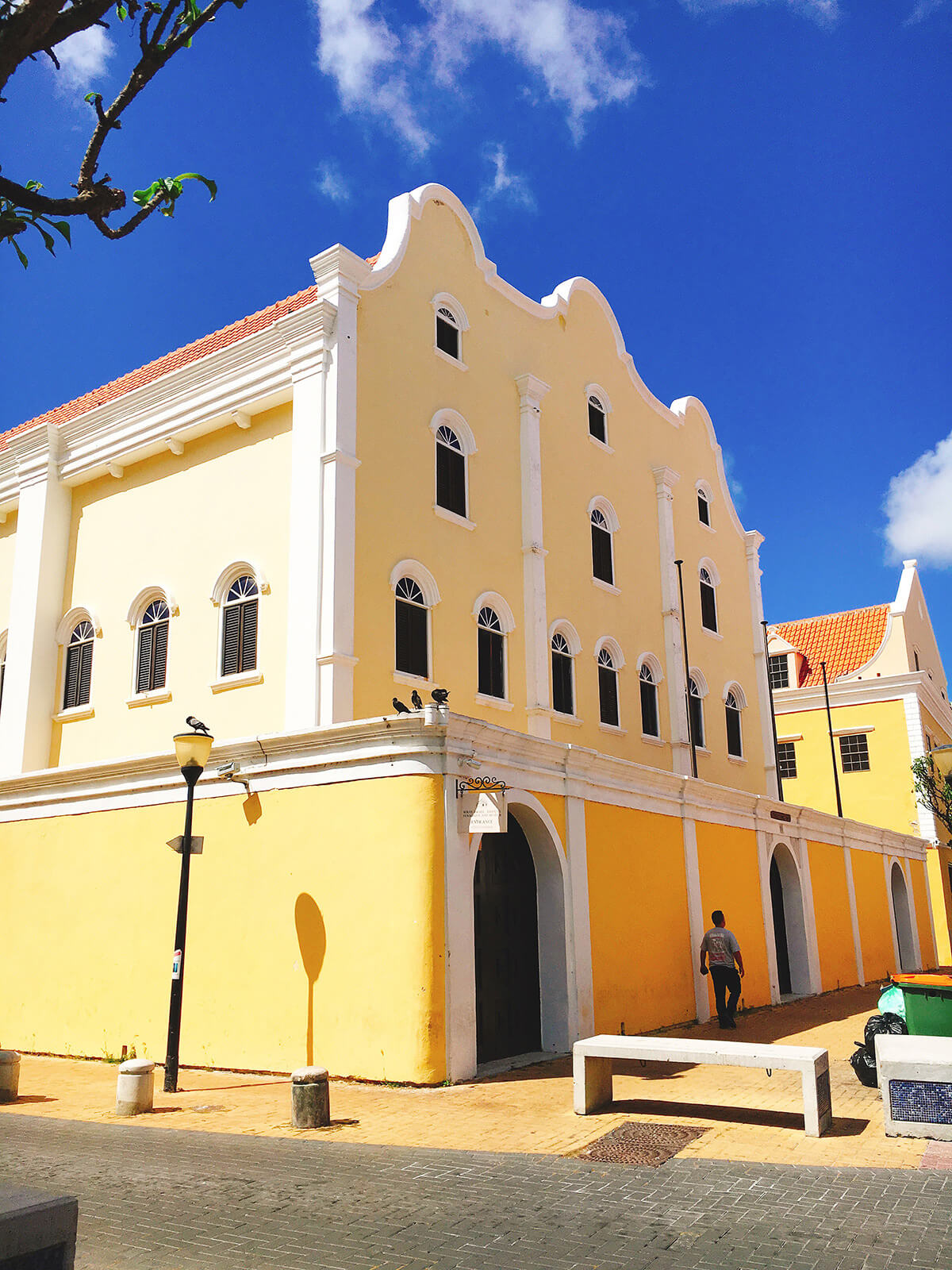
Wllemstad’s Mikve Israel Emanuel Synagogue, the oldest in the Americas
EXPLORE WILLEMSTAD
Curaçao’s colourful capital Willemstad is a UNESCO World Heritage Site with over 700 protected buildings. Willemstad served as the capital of the Netherlands Antilles until it was dissolved in 2010. The Santa Anna inlet divides the city into two parts: Otrobanda and Punda. Punda was founded in 1634 and is the older part of the city whereas Otrobanda (“other side” in the local Papiamento language) was founded in 1707. The two sides are connected by two bridges: the Queen Juliana Bridge, the highest bridge in the Caribbean, and the Queen Emma Bridge, a pedestrian pontoon bridge that swings open to let boats through to the sheltered Willemstad harbour.
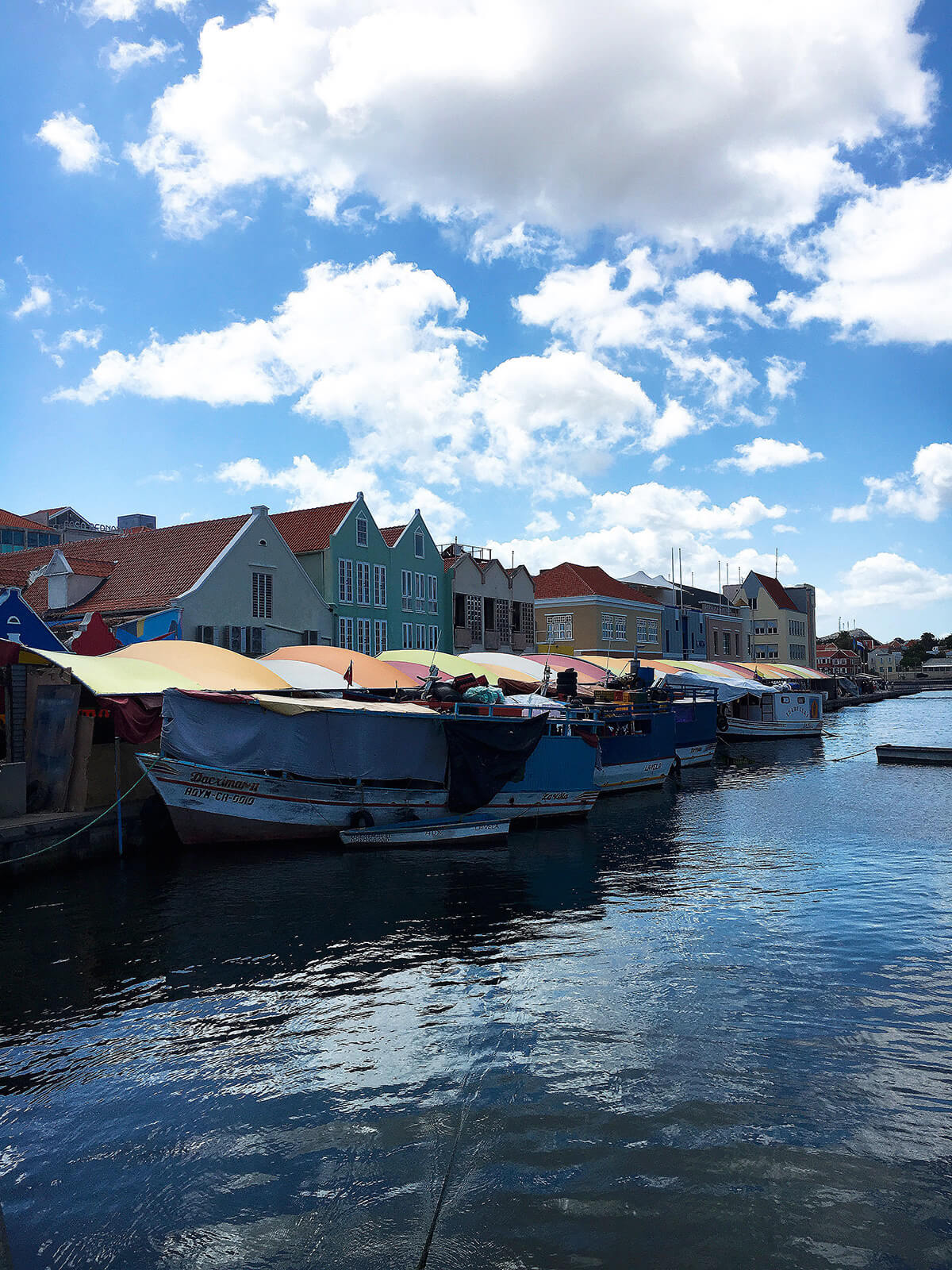
Willemstad’s floating market
A Willemstad Google search will likely result in a series of colourful, rainbow-hued buildings along Handelskade, the city’s most photographed street. Willemstad’s Dutch Colonial architecture is characterized by gabled roofs with curved eaves, candy-coloured façades, red-tiled roofs and narrow houses. Everywhere you look around the old town, you’ll find beautiful examples of this style of architecture. It’s easy to visit the entire city on foot in a day. Places of interest in Willemstad include the floating market, a small fleet of boats that arrive from Venezuela to sell their produce, the Pietermaai District with its stunning examples of Dutch Colonial architecture, several museums, the Mikve Israel Emanuel Synagogue, built in 1732 and the oldest synagogue in the Americas, Ronde Market for an authentic lunch, Otrobanda with its eclectic and less touristy side.
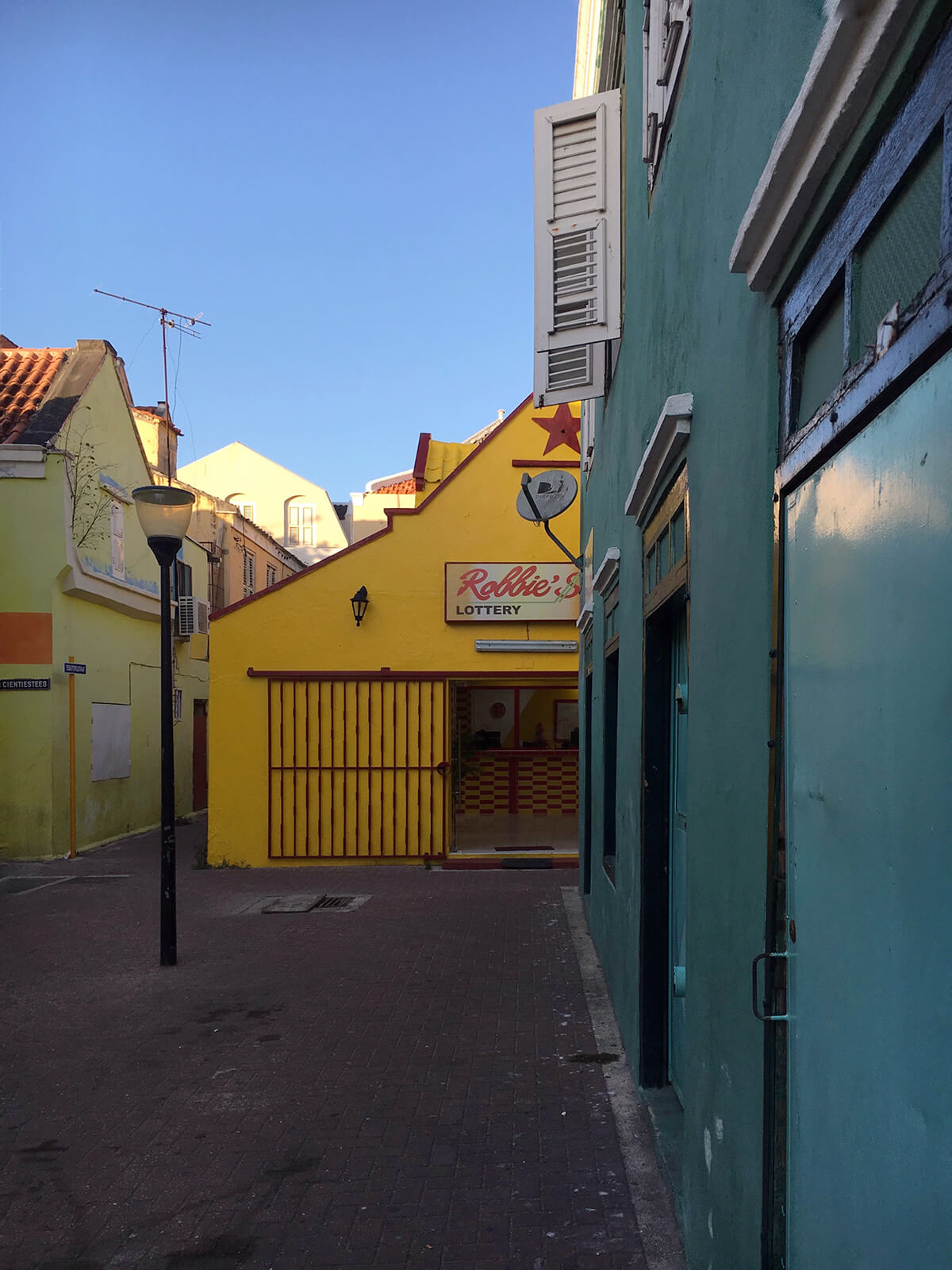
The colourful houses of Otrobanda
Willemstad nightlife and restaurant scene is lively. For a pre or post dinner drink, try Mundo Bizzarro whose decor is inspired by Havana and whose inviting terrace spills onto the street inviting pedestrians in. The Gourverneur de Rouville serves authentic Dutch and Caribbean food in a stately colonial manor on the opposite side of all those Handelskade colourful buildings. Book a table on the balcony for an unbeatable view or in their charming courtyard for a more quiet meal. Ginger serves great fusion Caribbean, Indian and Asian food. The restaurant’s beautiful outdoor dining room is located on one of Pietermaai’s hidden streets, which lends even more charm to the place.
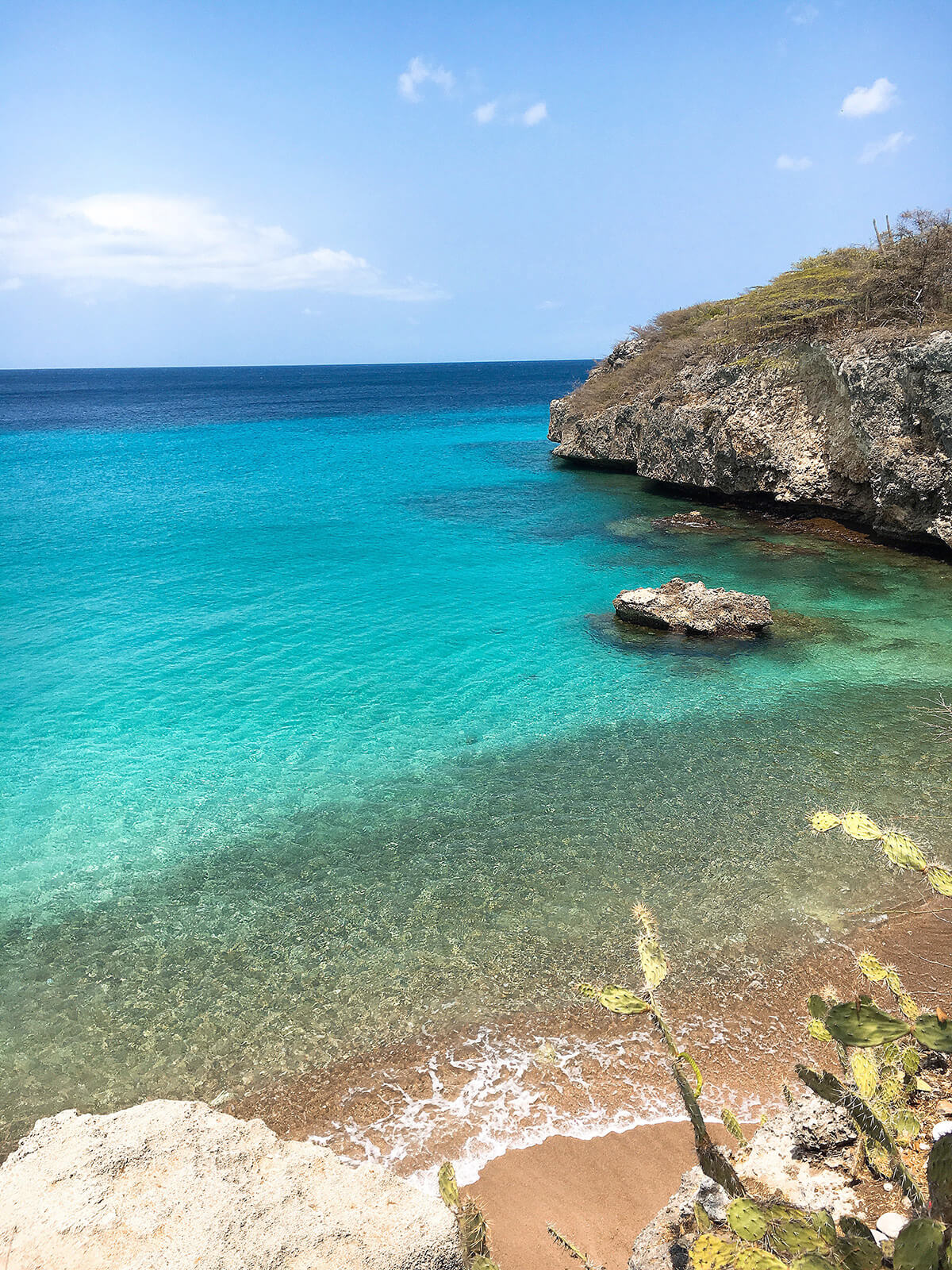
Curaçao’s beautiful Playa Jeremi
GO BEACH HOPPING
If you’re a beach lover like I am, I would recommend renting a hotel room or an apartment on the west coast of Curaçao, north of Willemstad. You can then be close to the city as well as to the multitude of beautiful beaches along the coast. Each one of these beaches has its own personalities and range of amenities such as dive centres, restaurants, public bathrooms and more. I’m dedicating an entire article to my beach hopping on Curaçao, so stay tuned!
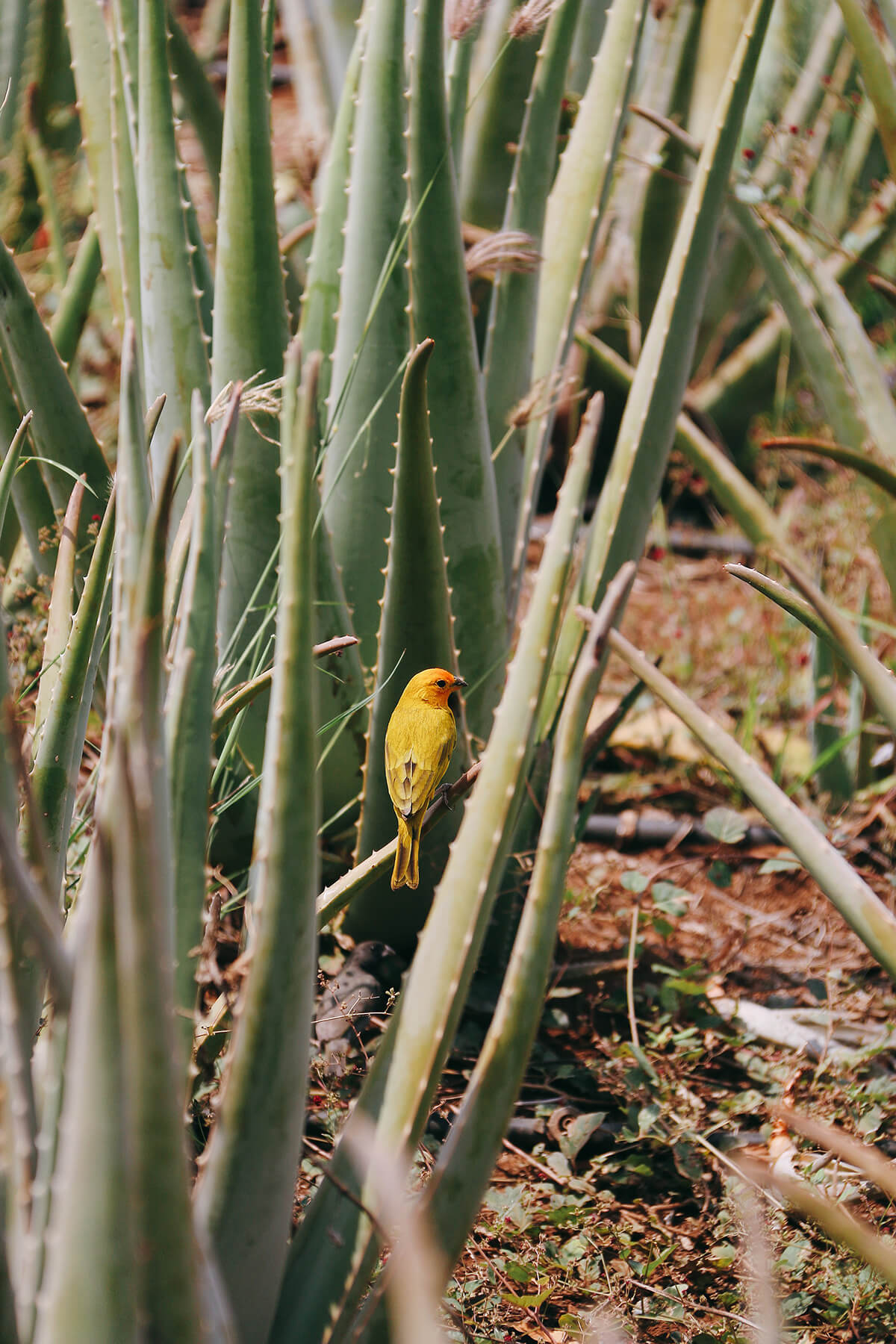
Colourful bird on an aloe vera plant at CurAloe in Curaçao
VISIT THE ALOE VERA PLANTATION
Curaçao’s climate is perfect for growing all kinds of cacti and more specifically the Aloe Vera plant. CurAloe is a 10 acre plantation with 100 000 aloe plants thriving on it. You can listen to a short presentation or tour the premises on your own. It’s lovely spot to stop for a drink and serve the surroundings. I followed the whims of a fidgety hummingbird and watched goats graze in the aloe fields while sipping on an espresso. CurAloe makes dozens of beauty and health products from the restorative plant on site, which you can try and buy at their boutique. I purchased a soothing aloe body gel that worked wonders on my sunburn.
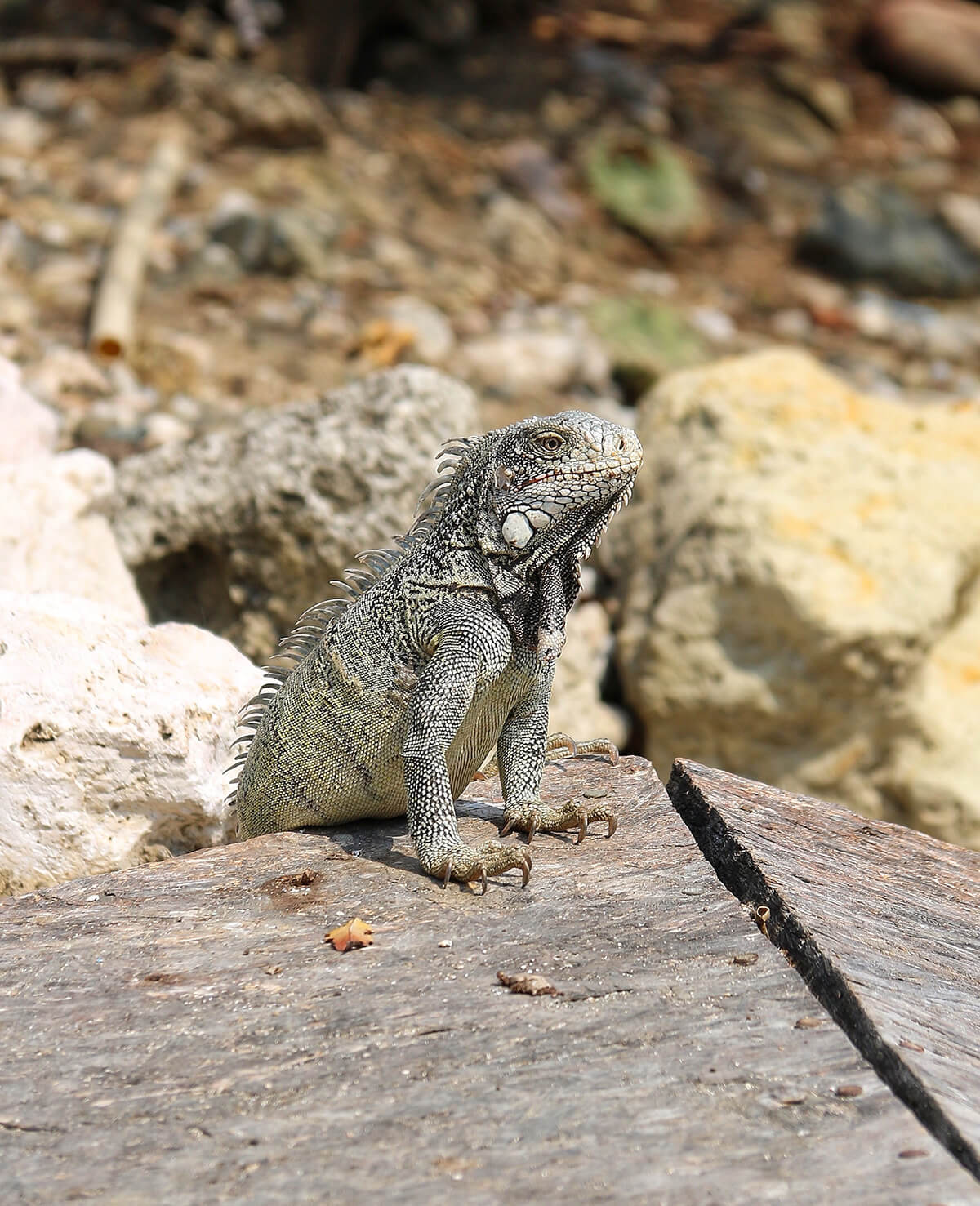
I loved observing Curaçao’s iguanas
OBSERVE THE LOCAL FLAURA AND FAUNA
Curaçao’s climate is semi-arid and very different from other lush Caribbean islands I have visited. The island’s flora is replete with cacti, thorny bushes, evergreen trees and aloe plants. Some cacti like the Kadushi can grow up to 10 meters high and resemble trees. Curaçao is home to 215 species of birds, of which I encountered dozens. Fleeting electric green hummingbirds, black and bright orange trupials, wild green and yellow parrots and salmon-hued flamingos as well as dozens more were a pleasure to observe on a daily basis. The island is also home to many species of lizards, including beautiful bright turquoise ones. And of course, the highlight of my wildlife encounters was meeting the iguanas. They range in size from a few inches to the size of a small dog and can be grey or different shimmering shades of green. They look like tiny dragons and are so fascinating. They come out when the sun is at its hottest and sit on top of the thorny bushes sunning themselves. You can encounter them everywhere on the island and more particularly at any of the two national parks (see below).
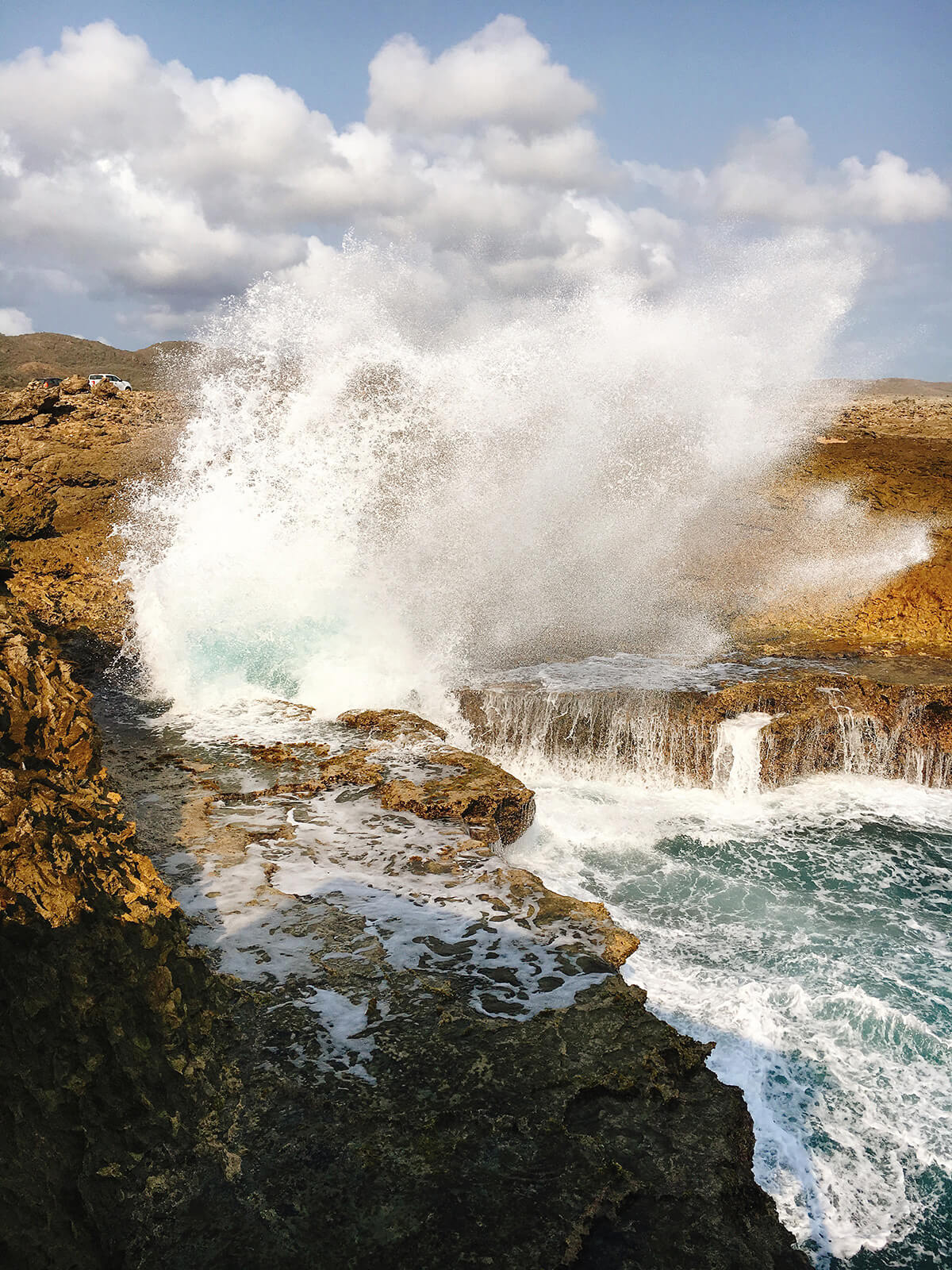
The monumental waves at Curaçao’s Shete Boka Park
EXPLORE THE NATIONAL PARKS
Curaçao’s sheltered and calm southwest coast counts dozens of beautiful coves and sandy beaches. That’s also where you’ll find the capital Willemstad and most of the island’s activities. On the other hand, the northeast coast of Curaçao is wild and disorderly and that’s where you’ll find the two main national parks. You can visit both parks in one morning or linger at any one of them for an entire day. I highly recommend getting there for sunrise and spending the cooler morning hours discovering the parks before it gets too hot. Christoffel Park is Curaçao’s biggest national park. In it you’ll spot the island’s most diverse fauna and flora with dozens of species scattered all around. There are several hiking trails zig zagging through the park ranging from easy to arduous. You can also drive through the park following a map that will indicate the best spots to stop and admire the view. Christoffel Park offers guided bird watching tours, safaris and more. A visit to the on-site Savonet Museum is a must. The restored plantation is one of Curaçao’s earliest and tells the story of the island from the Arowak Indians 4000 years ago until modern times.
A little further up the road is Shete Boka Park, or Seven Inlet Park. You can hike or drive from one inlet to the next, then park and walk along built platforms until you reach the water. You’ll hear the impressive sound of the waves crashing before you see them. Monumental, 30-foot tall waves, swelling then colliding with the chiselled rock formations of the northeast coast, carving them imperceptibly further with each movement, spritzing the surroundings with salty droplets and instigating fleeting rainbows in their reflection. It is absolutely mesmerizing to watch and to listen on repeat to the ocean engaging in this tireless and endless dance. Boka Tabla, the first inlet, is the most dramatic and and put me in a meditative state. Shete Boka Park is also an egg laying spot for three species of turtles.
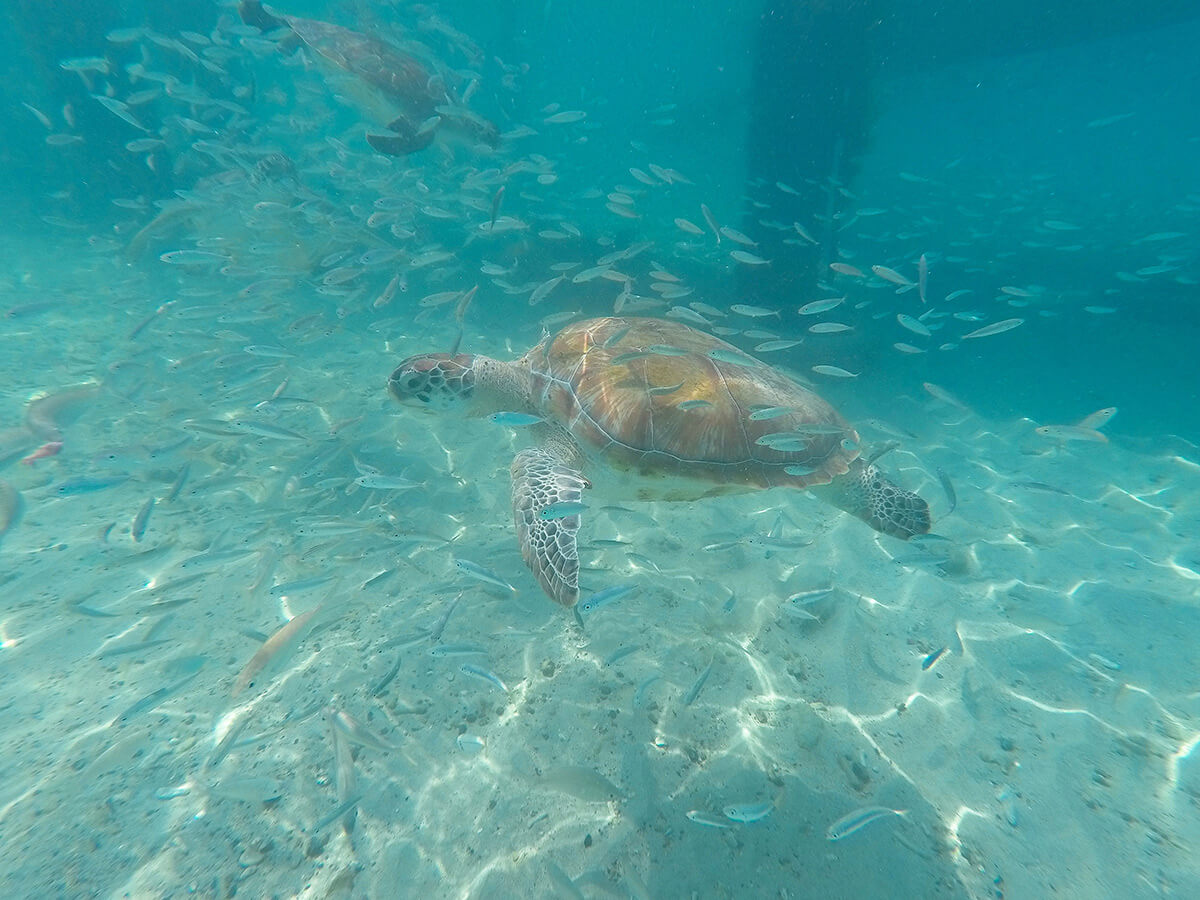
Snorkelling with turtles at Curaçao’s Playa Piskado
SNORKEL AND/OR DIVE
I have been to some pretty wonderful places on this planet–hello French Polynesia!–and I feel like the snorkelling in Curaçao is up there with the best of them. The island protects its waters and reefs, which creates true underwater wonderlands. You can stick your head underwater anywhere and observe hundreds of tropical fish. I have never had so much fun snorkelling. I am not a diver but if you are, there are over 70 dive spots in Curaçao for all levels, whether you want to learn or you’re an expert honed your skills. Come prepared with all the equipment you’ll need, especially if they’re customized like a prescription mask, for example (I own one and wouldn’t see anything if I had to dive with a regular rented mask). You can also rent everything you need at one of the many dive centres. You can do a lot of shore diving without ever having to get on a boat or go on one of the many organized excursions. And of course, the highlight of my snorkelling on Curaçao was swimming with turtles. Read all about that magical experience.
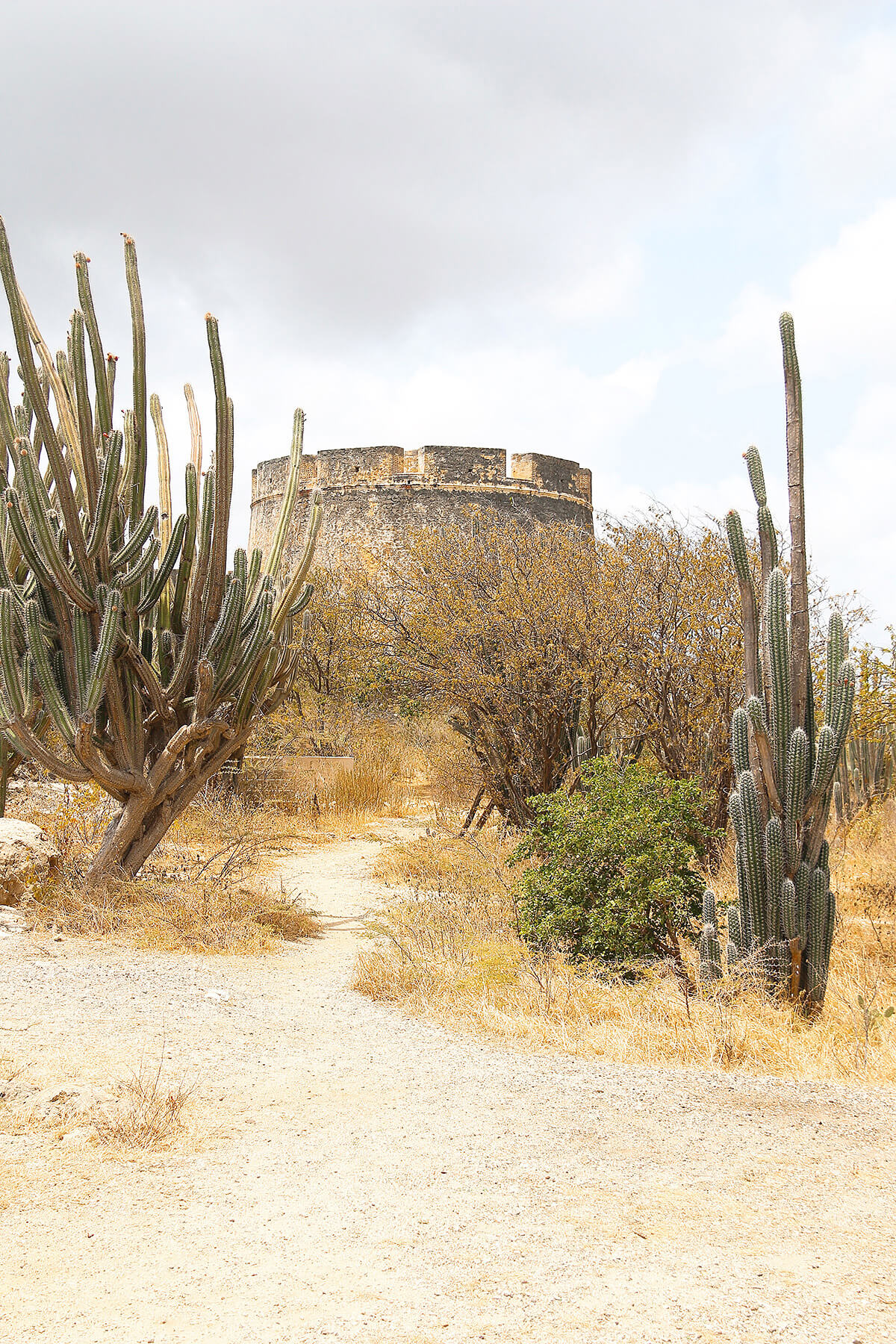
Curaçao’s Fort Beekenburg
AND A FEW MORE THINGS
There are so many other things to enjoy on the island of Curaçao. You can visit some of the forts such as Fort Beekenburg or Fort Amsterdam, both built as part of the fortifications to protect the city. Curaçao is an art loving island with many museum and galleries worth visiting such as the Curaçao Museum, the Museum Kurá Hulanda or the Nena Sanchez Gallery. You can also visit the ostrich farm, aquarium, botanical gardens or one of the many historical landhuis (plantations). I really wanted to spend a day at sea and on Klein Curaçao (little Curaçao), a small uninhabited island off the coast of the main island, but didn’t have time to do so, which only means that I’ll just have to go back.
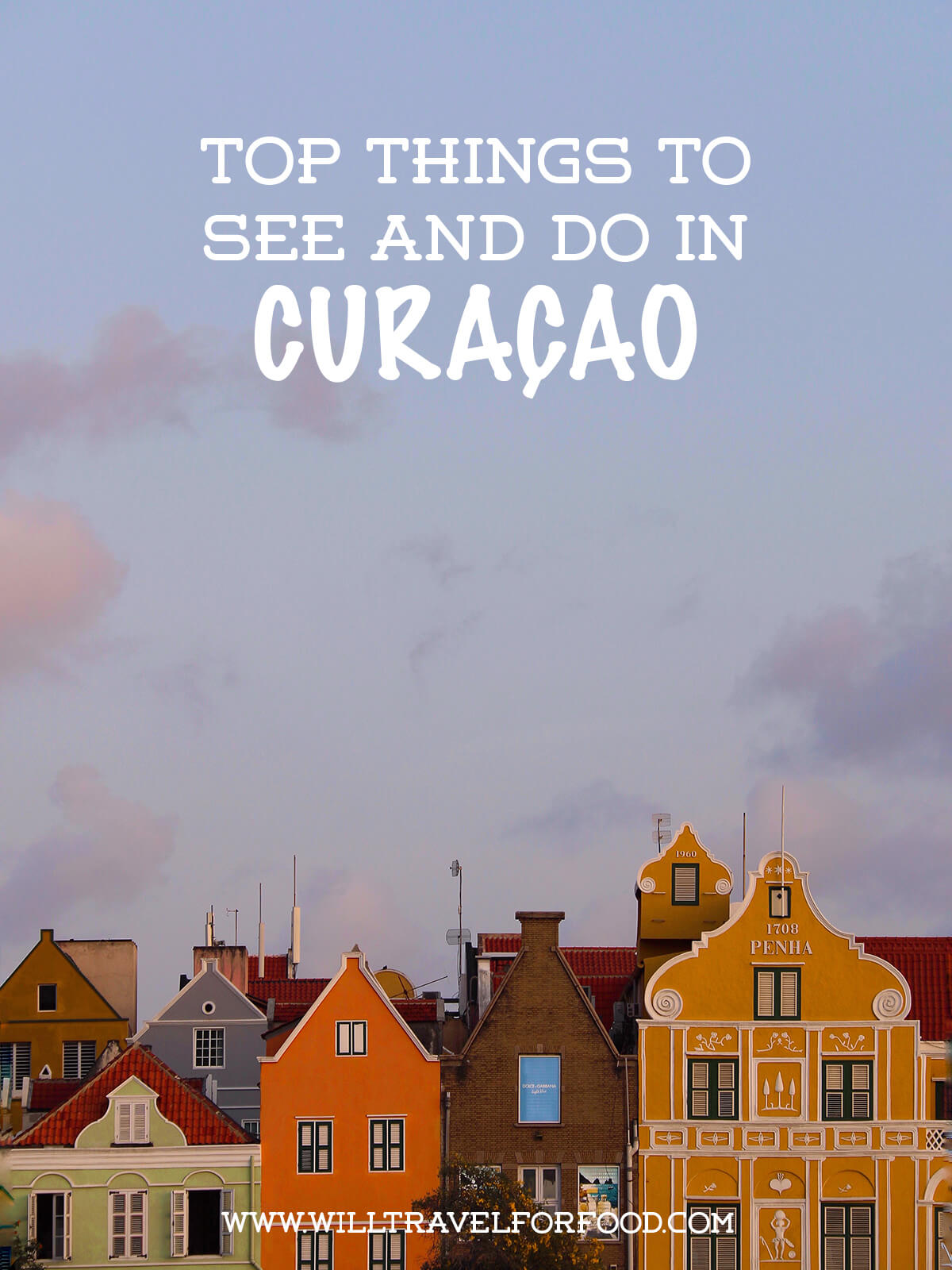
{{ PIN IT }} Top things to see and do in Curaçao
Click here to read my article on why you should go to Curaçao for your next vacation.



